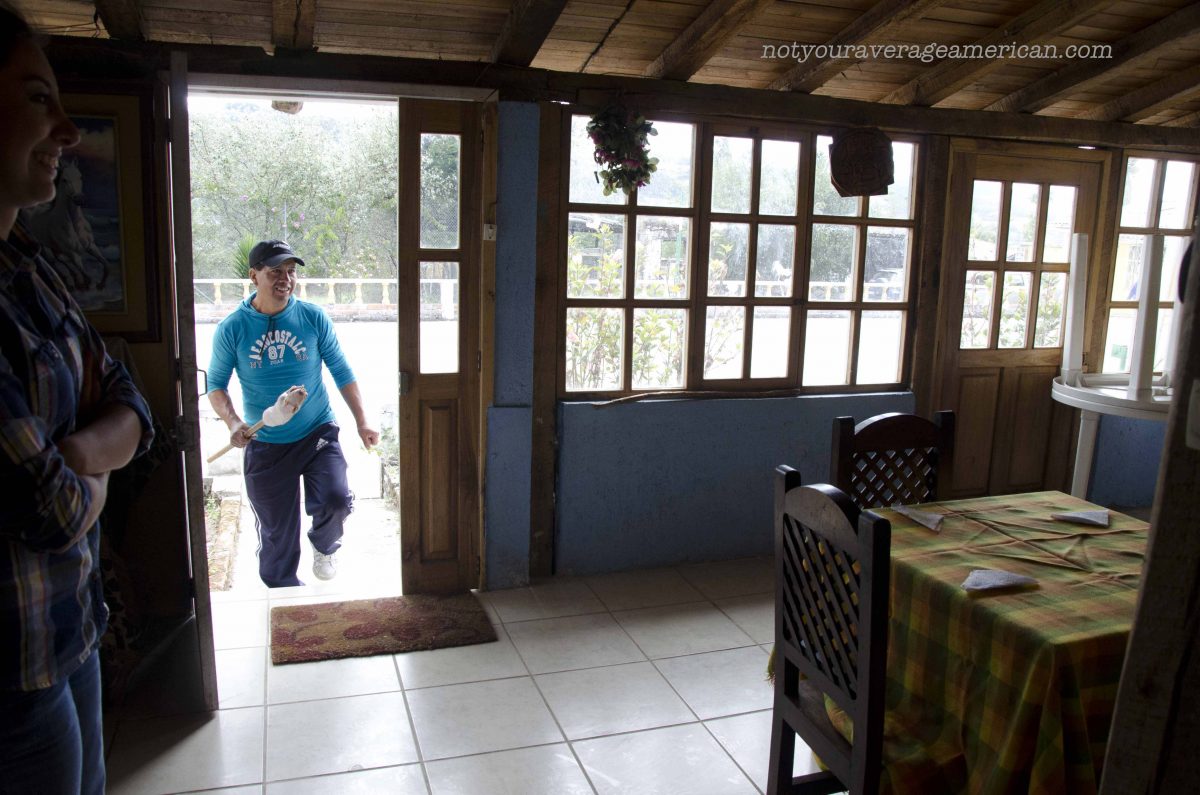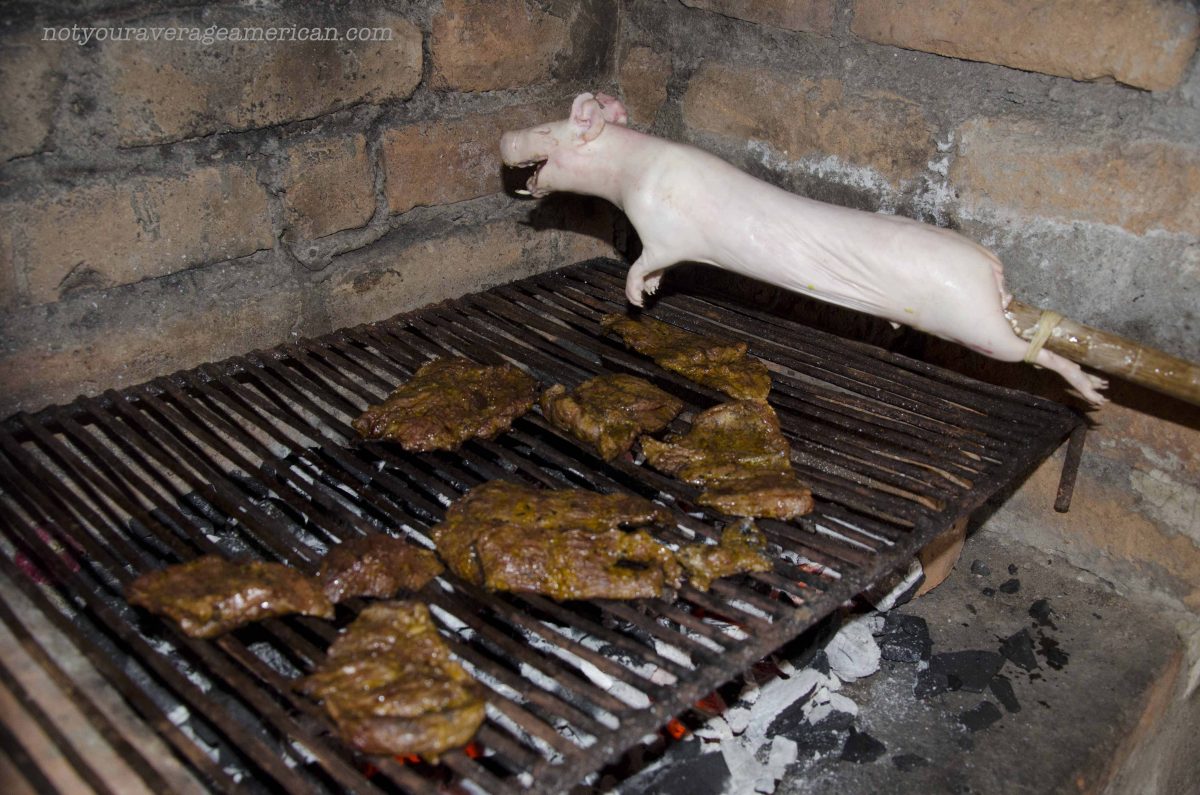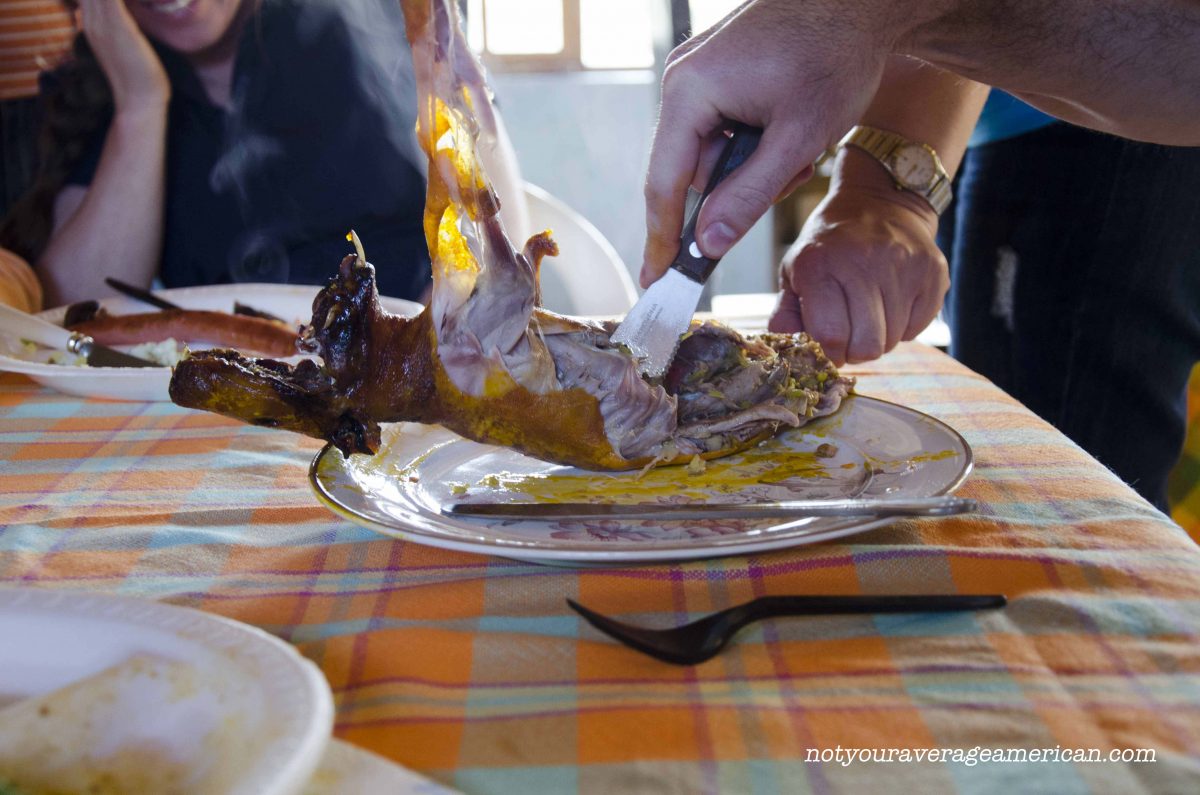Let me warn you. This post is not for the faint of heart.
In the mountainous regions of Ecuador people love to eat roast cuy (rhymes with gooey). A cuy is a guinea pig raised for meat. Ecuadorians raise them in small pens, caring for them until they’re large enough to make a good meal. That could be a few weeks or a little longer. No matter how long, each guinea is eventually headed to the grill.
For those of us that see guinea pigs as pets, this might seem very cruel. In fact, if you’re a vegetarian or vegan, I would stop reading now.
If you’re just turned off by the idea of eating Fifi, I would suggest setting aside your first world view and take a peek at how Ecuadorians roast guinea pig.

A Hacienda Guinea Pig Roast
This past weekend, I had the chance to see cuy prepared as fresh as they come – straight from the pen. Once killed (I didn’t see that part), the cuy went to the kitchen to be de-furred and gutted, then to a spit, then onto the grill, and, finally, placed on a platter at the table. The whole process took only a couple of hours.
In fact, I initially didn’t realize that cuy was on the menu at all. I visited the furry little critters in the morning on our tour of the farm. They were cute chubby balls of brown and white fur, some big and mama-like, others small and definitely not ready for prime time; all were skittish, rushing around their pen not wanting to be handled at all. Although this should come as no surprise as we now know that one of their numbers was destined to become dinner.
Preparing the Cuy
Later that day when I came back from a short walk, I was looking to see where my husband was hiding. I was told he and the others had started the fire for the afternoon meal, so I headed over to the building next door. I stuck my head across the threshold and gave a tentative «Hola» to see if anyone would look around the corner. Surprise! A woman held a naked cuy, deader than a doornail. She was running her fingers across its pale skin, pinching it to remove any last bits of hair that remained. The stiff little body looked very sad and I decided it was time to look for my husband somewhere else.

The next time I saw the cuy, it was all cleaned up, with bright red slits for eyes, a snout that looked very much like a pig’s, and these very delicate pink ears. Stuffed with onions and herbs, it had a pole stuck through its rear-end. That pole would become the spit.
I learned that you can’t just place a cuy on the grill. If you did, the delicate meat would burn in some parts and not cook thoroughly in others. Slowly, very slowly, the chef turns the cuy over the fire. If it cooked too quickly, it could be raw in the middle. Slow turning is the name of the game. This was going to be a long process.

Roasting the Cuy
After about thirty minutes, as the skin began to take on a toasted hue, our cuy expert brought in a spring onion cut like a brush. He dipped it in achiote oil. This oil is bright yellow from annatto seed. As our chef brushed the golden oil onto the cuy, it began to turn the same color as saffron, a gold-tinted with just a hint of red. Slowly but surely, that brightness dulled to a golden brown as the roast guinea pig continued to cook. It was only when the cuy’s little paws could be twisted and easily come off that we knew for sure that the meat was ready to eat. Better than a meat thermometer

Eating the Roast Guinea Pig
The prepared and roasted cuy lay on the plate like a sad puppy dog waiting to have his belly rubbed. However, his teeth were gruesome, laid bare by its shrunken skin. Still, a knife quickly took care of it all. Our chef quickly split it down the middle and offered shares to anyone who wanted to give it a taste.

Even some of our Ecuadorian friends at the table had never tasted cuy before so it was a true international experience. The meat was dark, like a turkey drumstick. The skin was thick and crispy at first, not unlike the skin found on roasted pork. But after it sat and cooled, it turned chewy and did not want to crisp again even after going back on the grill. Some of the meat was delicious, rich and just the right amount of greasy. Other parts were stringy and it was hard to work around the tiny bones.
The final judgment? Cuy tastes a lot like chicken. I would try it again.

We originally published this article on September 11, 2014. We have since edited for clarity and reformatted.













0 comentarios